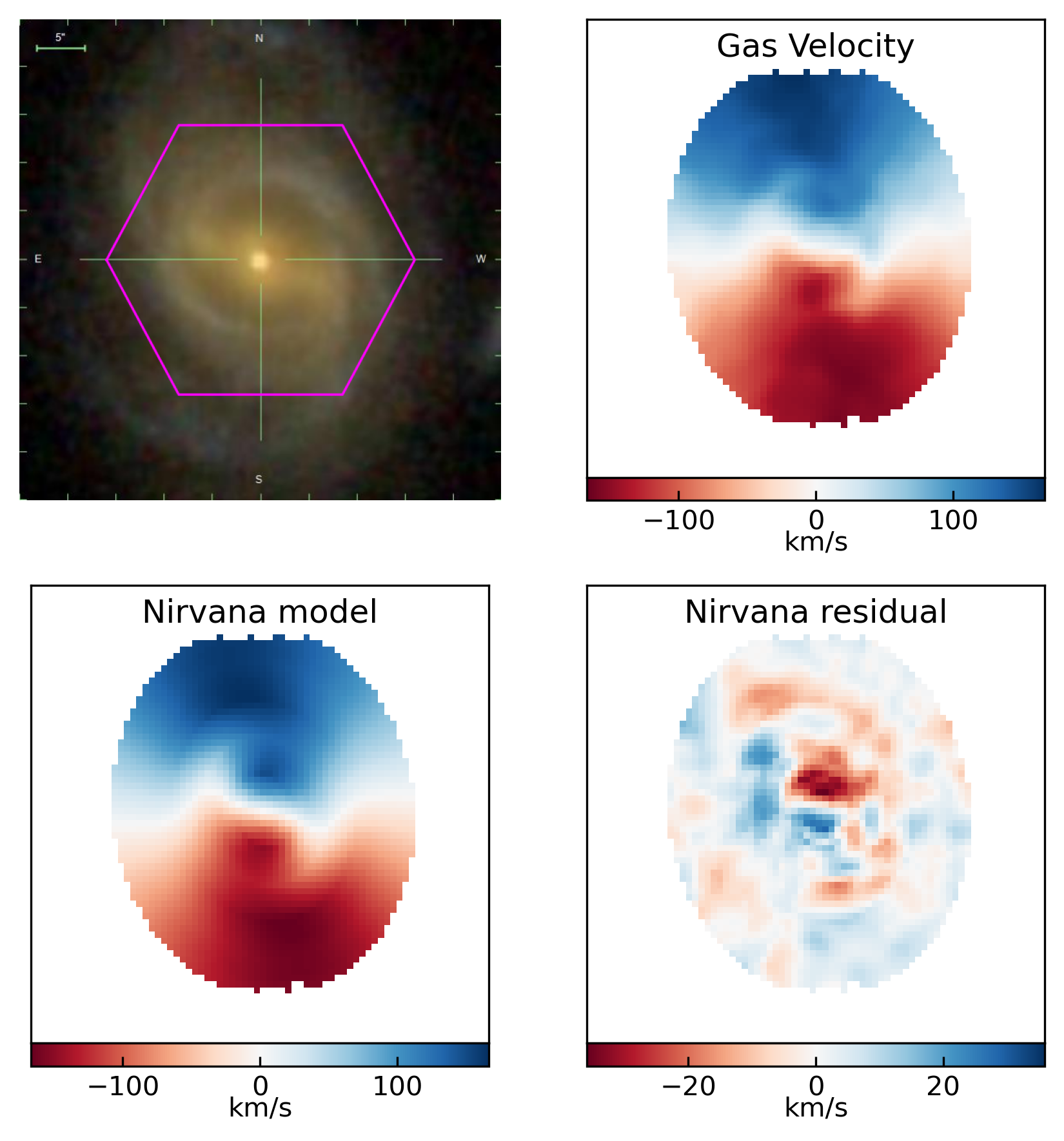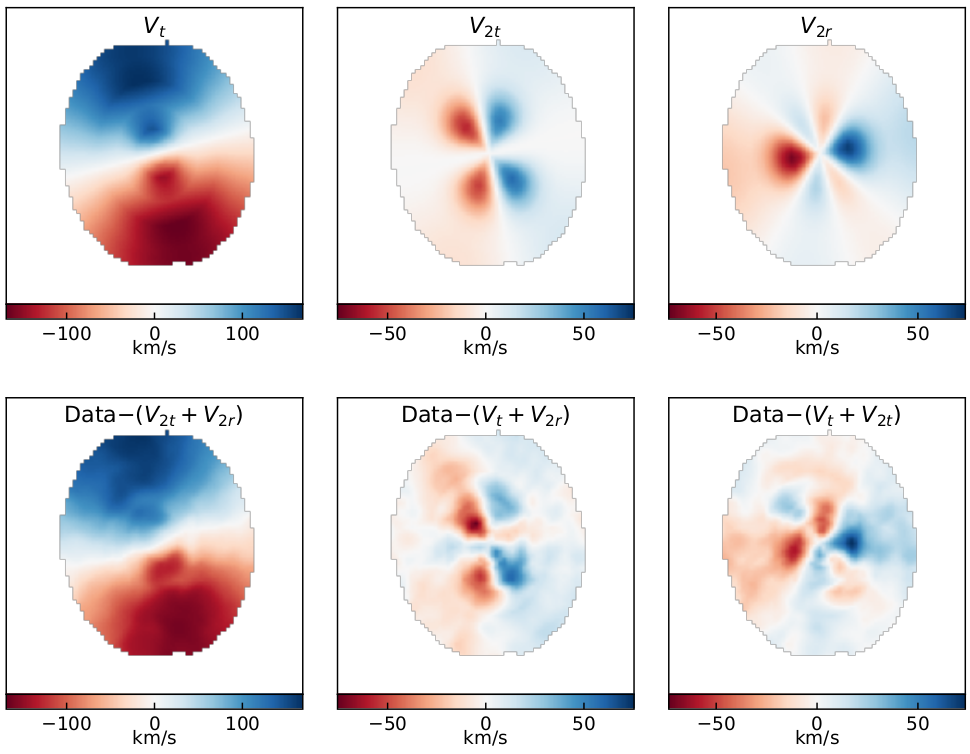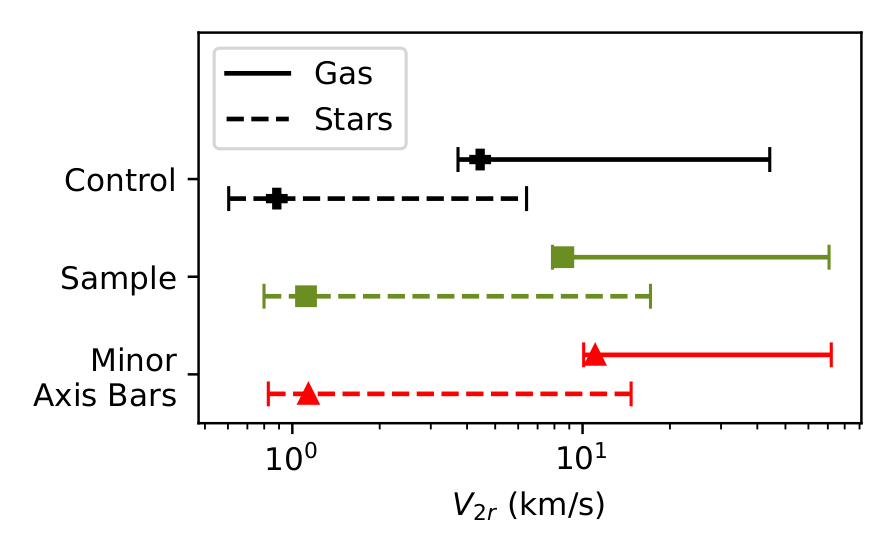Bars disrupt normal galaxy rotation
 Typical disk galaxies have well-ordered rotation and are axially symmetric since most of their stellar motion is in the tangential direction. Their rotation can be easily modeled with a parametric model using any number of common rotation curve models, or with a nonparametric model that describes the specific shape of the galaxy's rotation curve.
Typical disk galaxies have well-ordered rotation and are axially symmetric since most of their stellar motion is in the tangential direction. Their rotation can be easily modeled with a parametric model using any number of common rotation curve models, or with a nonparametric model that describes the specific shape of the galaxy's rotation curve.
Bars disrupt this orderly rotation. Bars are linear features at the center of a galaxy with bilateral symmetry. According to dynamical theory and models, the stars in galactic bars move radially in and out near the galactic center. The galaxy velocity field on the right has a significant distortion in its normal rotation due to the motions in its bar.
Because of this irregular motion, traditional axisymmetric velocity field models often do not describe the velocity fields of barred galaxies, so different models should be applied to them.


